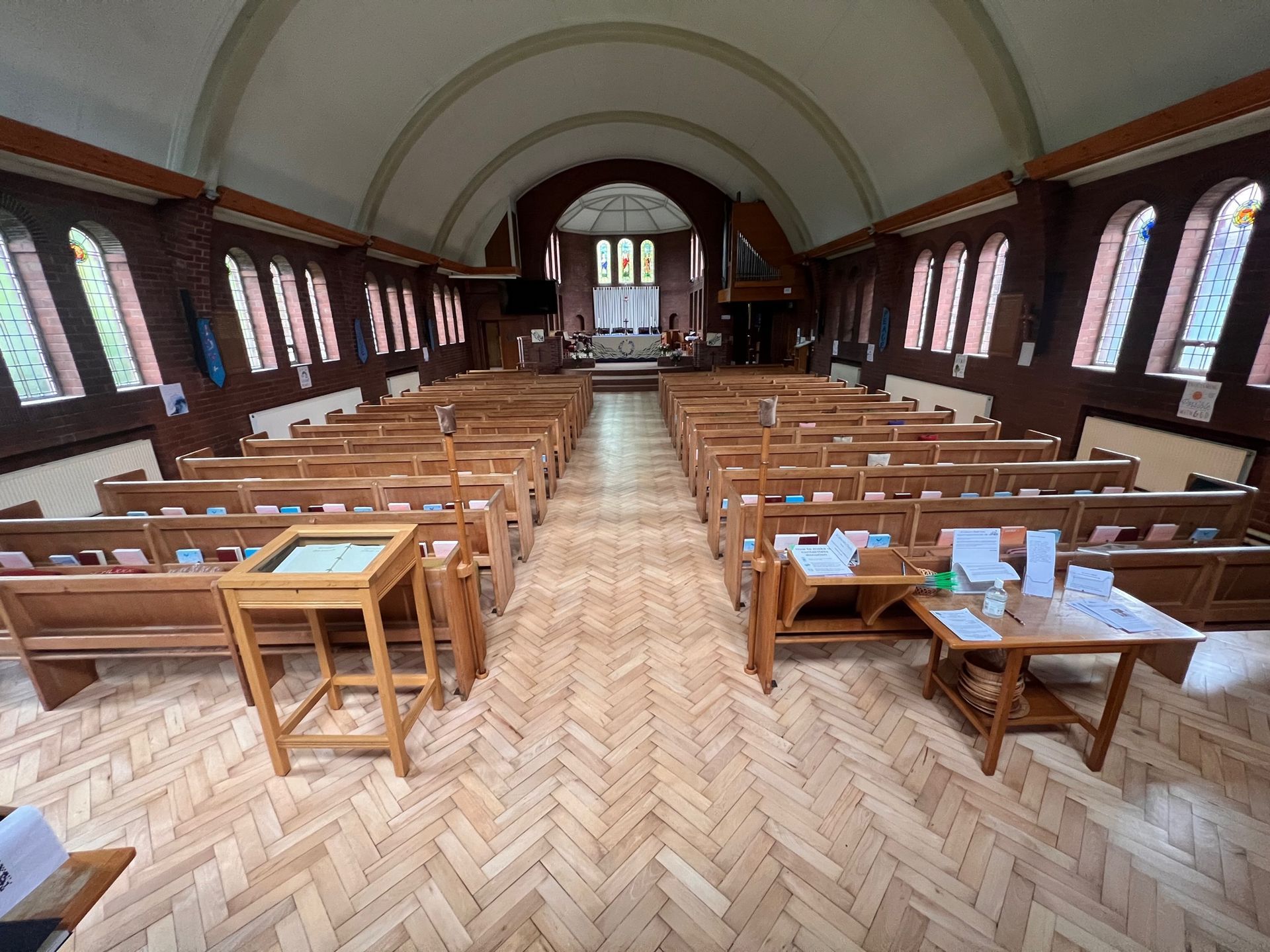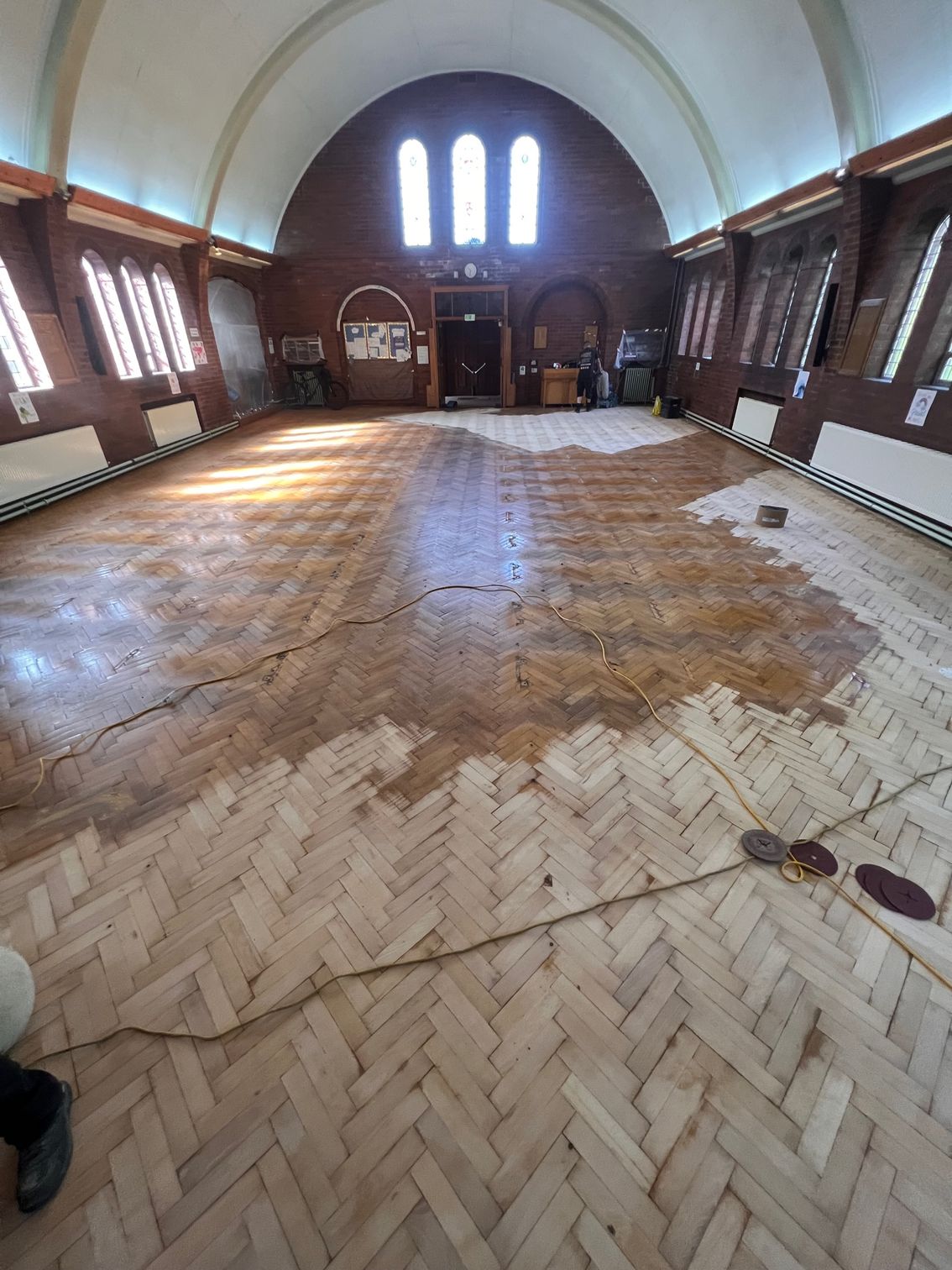Why Floor Finishes Are Crucial in Churches

Introduction
Churches are more than just buildings — they are spaces filled with history, community, and spiritual significance. Every detail, from stained glass to wooden pews, contributes to the atmosphere of peace and reverence. But one often-overlooked element plays a huge role in both aesthetics and longevity: the flooring.
Church floors endure constant use — footsteps during services, movement of chairs or pews, weddings, community events, and even choir rehearsals. Over time, this activity can wear down even the strongest hardwood or stone surfaces. That’s where a proper floor finish becomes essential.
Whether you’re restoring centuries-old oak flooring or installing new timber in a modern chapel, the right finish will protect the surface, enhance its beauty, and preserve the sacred environment for years to come.
The Unique Challenges of Church Flooring
Churches have specific flooring needs that differ from homes or commercial properties:
- Heavy Foot Traffic: Services, concerts, and community events bring hundreds of people weekly.
- Furniture Movement: Pews, chairs, and tables are often rearranged.
- Variable Temperatures: Churches can be cool and dry in winter, warm and humid in summer.
- Acoustic Considerations: The finish affects how sound travels during music and sermons.
- Historic Preservation: Many churches have heritage flooring that must be carefully maintained.
A well-chosen finish helps protect against these challenges while maintaining the visual and historical integrity of the space.
The Importance of Floor Finishes in Sacred Spaces
1. Preserving Historical Integrity
Many church floors are made from original hardwoods such as oak, pine, or elm, installed decades — or even centuries — ago. These surfaces carry the marks of history, and sanding or finishing them requires care and sensitivity.
A quality floor finish helps preserve the authentic look and feel of historic wood while adding a protective layer against future wear. It allows churches to retain their heritage without compromising on safety or durability.
2. Protecting Against Heavy Wear
Daily foot traffic, chair movement, and the use of cleaning equipment can wear down untreated wood quickly. The right finish provides a resilient surface that resists scuffs, scratches, and dirt build-up.
This protection is particularly vital in entrance areas, aisles, and community halls, where the wood faces constant stress.
3. Enhancing the Atmosphere
Floors play a surprisingly large role in a church’s ambience. A freshly finished wood floor reflects natural light beautifully, creating a warm and inviting tone during services and ceremonies.
Whether it’s the deep, rich glow of an oiled oak floor or the elegant sheen of a lacquered surface, a well-finished floor complements the architectural beauty of stained glass, stone, and woodwork.
4. Simplifying Maintenance
Cleaning and maintaining church floors should be practical and cost-effective. Finishes such as lacquer or hard wax oil seal the surface, preventing dirt, candle wax, or water from seeping into the wood.
This makes routine cleaning easier and reduces the need for costly restoration work in the future.
Choosing the Right Floor Finish for a Church
Selecting the ideal floor finish depends on several factors: the age of the floor, level of foot traffic, desired aesthetic, and maintenance capabilities. The three main types of finishes are lacquer, oil, and wax.
Lacquer Finish: Durable and Low-Maintenance
Overview:
Lacquer (or varnish) forms a hard, protective layer on top of the wood. It’s one of the most durable finishes available and is ideal for churches with heavy weekly use.
Advantages:
- Excellent resistance to scratches and scuffs.
- Easy to clean and maintain — perfect for caretakers.
- Long-lasting (can last 7–10 years before reapplication).
- Available in gloss, satin, and matte finishes to suit traditional or modern interiors.
Considerations:
- Harder to repair in small sections; may require re-sanding over time.
- Can slightly alter the natural tone of antique wood if not applied carefully.
Best For:
Main aisles, entrance areas, and multi-purpose community halls.
Oil Finish: Natural and Repairable
Overview:
Oil penetrates deep into the wood fibers, enhancing the grain and giving a natural, satin look. It’s especially suited for heritage restorations or churches with older timber.
Advantages:
- Enhances the natural character and warmth of the wood.
- Easy to reapply and spot-repair — no full sanding required.
- Breathable finish, suitable for historic flooring that needs to “move.”
Considerations:
- Requires re-oiling every 1–2 years for high-traffic areas.
- Less resistant to standing moisture compared to lacquer.
Best For:
Historic sanctuaries, side chapels, or spaces prioritizing traditional aesthetics.
Wax Finish: Authentic and Characterful
Overview:
Wax is one of the oldest finishing methods and remains popular for churches seeking authenticity. It produces a rich, soft sheen that enhances the character of antique flooring.
Advantages:
- Beautiful, traditional appearance.
- Can be buffed to restore shine.
- Easy to repair small scuffs and marks.
Considerations:
- Requires frequent reapplication and polishing.
- Less resistant to heavy wear and moisture.
Best For:
Decorative or low-traffic areas such as altars, choir stalls, or heritage spaces.
Practical Considerations: Balancing Beauty and Function
When restoring or finishing a church floor, it’s crucial to strike a balance between aesthetic preservation and practical use.
- Traffic Patterns: High-use areas should receive harder finishes like lacquer, while low-traffic zones can retain traditional oil or wax.
- Acoustic Impact: Some finishes slightly change sound reflection — matte oils or waxes tend to soften acoustics, while gloss lacquers can brighten them.
- Cleaning Requirements: Churches often rely on volunteers or caretakers, so simple maintenance is key. Sealed finishes reduce cleaning time.
- Sustainability: Eco-friendly, low-VOC finishes are available — ideal for churches committed to green initiatives.
Recent Example: Church Floor Restoration in Heald Green, Cheadle
Recently, our team completed a floor restoration project in a historic church in Heald Green, Cheadle, originally built in 1955. The oak flooring had become dull, scratched, and uneven due to years of use during weddings, concerts, and community events.
After careful sanding with dust-free equipment, we applied a matte lacquer finish to preserve the natural tone of the wood while providing a durable surface suitable for daily services.
The result was transformative:
- The floors regained their warm, golden hue.
- The surface was smooth and easy to clean.
- Parish members commented on how the renewed floors enhanced the light and atmosphere of the sanctuary.
This project demonstrated how the right finish can protect heritage flooring while keeping the space functional for modern community use.
Maintenance Tips for Church Floors
To maintain beauty and durability:
- Place mats at entrances to trap dirt and moisture.
- Sweep or vacuum regularly with soft brushes.
- Use felt pads under pews and chairs to prevent scratches.
- Avoid harsh chemicals; use wood-safe cleaners.
- Reapply oil or wax finishes as recommended.
- Schedule professional maintenance every few years for lacquered floors.
Conclusion
In churches, floors are more than surfaces to walk on — they’re part of the sacred experience. The right floor finish protects, beautifies, and preserves the spiritual and historical essence of the space.
- Lacquer provides long-lasting durability for busy areas.
- Oil enhances warmth and natural charm, perfect for heritage wood.
- Wax maintains authenticity in decorative or traditional interiors.
By investing in professional finishing and ongoing maintenance, churches can ensure their floors remain safe, beautiful, and welcoming for generations to come.
✨ Looking to restore your church floors? Contact us today for a free consultation on church floor sanding and finishing.

